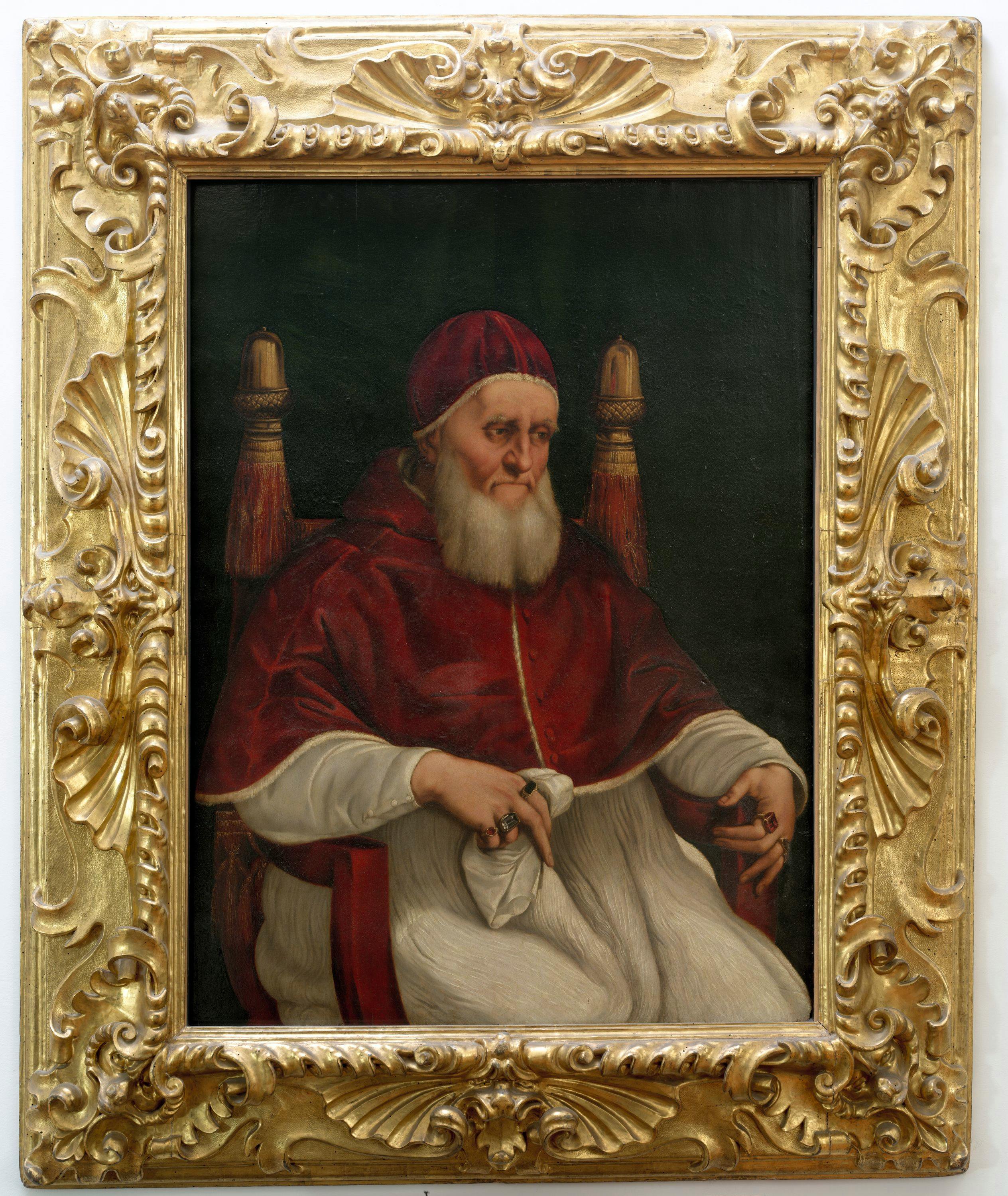Portrait of Julius II
Raphael's workshop
Giuliano della Rovere (Albissola, Savona 1443- Rome 1513) was pope from 1503 to 1513 under the name Julius II. A skilful politician, but above all a military man of impulsive character, he based his entire pontificate on the consolidation of the Church's role in the European context, the affirmation of its temporal power and the defence of its territorial borders against threats from other European nations. However, his fame is also linked to his role as an extraordinary patron of the arts and sponsor of Michelangelo, Raphael, Bramante and many other artists who contributed to radically changing the appearance of Rome in the first decades of the 16th century.
Raphael was in Rome in the autumn of 1508 and in a short time had won the favour of the pope who entrusted him with the decoration of four large rooms chosen to establish his new private flat, known today as the “Raphael Rooms”. Raphael completed the first of the rooms, the one known as the “Segnatura”, in 1511 and the design for the portrait of Julius II is also dated to around this time. The pope is depicted on a chamber chair the uprights of which have an acorn-shaped tip: this is a brilliant ploy by Raphael to recall the coat-of-arms symbols of the Della Rovere family (the acorns, fruits of the oak tree). The space is defined by a curtain that was originally intended to have a bottle-green colour, which can no longer be seen today due to oxidation of the pigments and the consequent change of colour to a dark brown shade. The absorbed expression of the subject, staring at an indefinite point in front of him, and the position of the bejewelled hands - one clasps a handkerchief, the other seems almost to want to cling to the armrest - form an ensemble of great emotional intensity. It is not so much the sumptuousness of the clothing, albeit carefully thought-out, that strikes the spectator, but the gestures of the protagonist, the expression on his tired and sagging face, caught up in the last years of his life tormented by the vicissitudes of the long conflict with France and the resulting territorial losses. As a result of these events, Julius II decided to let his beard grow and to wear it as a sign of mourning until he regained the stolen territories. The impact caused on the public of the time by the portrait of that “terrible” and at the same time very old pope is testified by the words of Giorgio Vasari in his biography of Raphael, where he specifies that the painting was “so alive and true that it made people afraid to look at the portrait, as if he were actually alive” and adds an important piece of information regarding its initial location “the work is now in Santa Maria del Popolo”. The painting mentioned by the biographer, identified in the past as the Palatine Gallery exemplar, is now unanimously recognised as the version in the National Gallery, London, which was executed in oil on wood. Our painting, on the other hand, which came to Florence with Vittoria della Rovere's inheritance, is to be considered a second version on the same model, probably executed by the pupils of the painter to be sent to Urbino, in homage to the reigning family to which the pope belonged.
J.Meyer Zur Capellen, in Raphael and the Portrait of Julius II, a cura di J. Sander, Frankfurt, 2013, pp. 51-77; N. Baldini in 1564/2014 Michelangelo. Incontrare un artista universale, a cura di C. Acidini, E. Capretti, S. Risaliti, Firenze, 2014, pp. 232-233.
